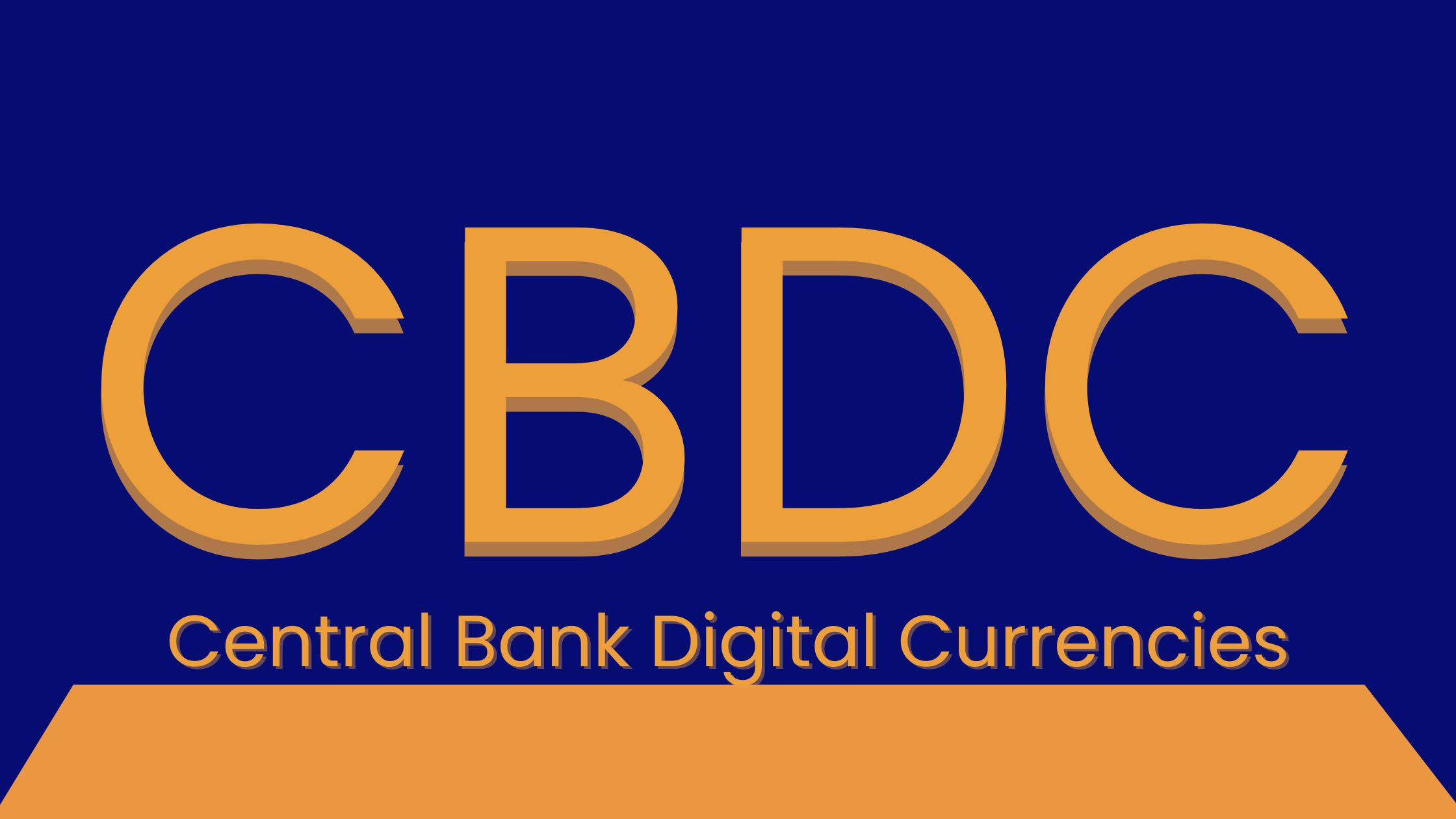
Hello there, Blockchain geeks! How are you all doing? Since we didn’t publish much last week, we thought of bringing something exciting for you this week. Welcome to the future of money. One of the trending topics in the Blockchain world is Central Bank Digital Currencies, or CBDCs for short. AKA Digital fiat currency or Digital Base Money. We are going deep into the technicalities of magic behind CBDCs’ infrastructure.
Have you ever wondered how governments and banks are entering the digital age with their form of digital cash? If so, this web blog is just for you. We will explore the intricacies of CBDC powered by Blockchain and distributed ledger technology (DLT).
Note: Don’t mix CBDC with Cryptocurrencies & Stablecoins
So, the questions that must be coming to your mind must be:
What Is A CBDC (Central Bank Digital Currency)?
How Are CBDCs Different From Cryptocurrencies & Stablecoins?
What Is A Central Bank Digital Currency (CBDC)?
A Central Bank Digital currency (CBDC) is a form of digital currency issued and regulated by a country’s central bank. It’s similar to cryptocurrencies but regulated by the central bank rather than a commercial bank. So, what makes these digital currencies so special?
- Types of Central Bank Digital Currency (CBDC)
There are two primary categories of CBDCs:
- Retail CBDCs
- Wholesale CBDCs
- Retail CBDC
Retail CBDCs are a form of fiat currency used by consumers and businesses to make payments for everyday transactions. They remove intermediary risk.
Retail CBDCs have two parts. Here is a difference between them:
- Token-based retail CBDC: They are accessible with private keys, public keys, or both. Users can execute transactions anonymously.
- Account-based retail CBDC: They need digital identification to access an account.
- Wholesale CBDC
Wholesale CBDCs are designed for financial institutions and work like Central Bank reserves. Users deposit funds into an account granted by the central bank to settle interbank transfers. Central banks can use monetary policy tools like interest on reserve balances to set interest rates and influence lending.
| Feature | Retail CBDC | Wholesale CBDC |
| Target Users | General public, individuals, and businesses | Financial Institutions |
| Purpose | Facilitating everyday transactions | Interbank Settlements, large-value transfers |
| Accessibility | Widely available, potentially through mobile wallets or bank accounts | Access restricted to financial institutions |
| Analogy | Digital cash | Electronic reserves |
| Denomination | Small Denominations for retail transactions | Large denominations for interbank settlements |
| Anonymity | May offer some level of Anonymity | Typically, not anonymous |
| Security | Strong security measures to protect user funds | Extremely high-security standards |
| Offline Capabilities | May offer limited offline functionality | Primarily Online |
| Impact on Monetary Policy | Potential Impact on monetary policy through direct interaction with the public | Direct impact on monetary policy through control over interbank transactions |
The Blockchain Buzz & Distributed Ledger Technology
It’s obvious everyone has heard about Blockchain. A big thank you to Bitcoin Hype. So, we know that Blockchain is a digital ledger that records transactions in a safe, trans[aren’t way. Every transaction is like a chain of Blocks (Hence the name). So, Blockchain is cool because it’s decentralized, which means one entity does not control it. Instead, a bunch of computers (nodes) work harmoniously to validate the transactions.
Distributed Ledger Technology
Distributed Ledger technology (DLT) is the umbrella term for Blockchain and other technologies. It’s a way to simultaneously share and record digital data across multiple sites and locations. This approach makes it nearly impossible to alter. So, in the CNDC world, DT takes care of tracking, verifications, and accounting.
To understand Blockchain and distributed ledger technology, you should have some information about :
- Blockchain And Distributed Ledger Technology
- Key Features Of Blockchain
- How Blockchain Differs From Traditional Databases And
- The Concept Of Consensus Mechanism In Blockchain
FUN FACT: Did you know that the concept of DLT dates back to the early 1990s?
It wasn’t until 2008, when the mysterious Satoshi Nakamoto created Bitcoin, that blockchain technology gained real traction.
Today, it’s not just for cryptocurrencies—it’s the backbone of many innovative technologies, including CBDCs
Countries like China have already started testing their own CBDCs. The Digital Yuan is one of the most progressive projects already out there, pointing in the direction of replacing physical cash. Some other countries, like the USA and some Eurozone regions, are also uncovering their versions with unique features.
So, as we move forward in this digital world every day, CBDC is all set to advance and grow. They have the ability to offer a more efficient, secure, and inclusive financial system.
Why Use Blockchain and DLT for CBDCS?
- Security
- Transparency
- Efficiency
The Role Of Distributed Ledgers In CBDCs
The cornerstone upon which Central Bank Digital Currencies (CBDCs) are built is Distributed Ledger Technology (DLT). It provides the underlying infrastructure for creating, managing, and circulating digital representations of fiat currencies.
1. How DLT Underpins The Functioning Of CBDCs
A DLT, typically a blockchain, is a shared, immutable ledger that records transactions across multiple computers. In the context of CBDCs, this ledger serves as a digital vault, recording every transaction involving the digital currency.
- Issuance: Central banks can use DLT to create and distribute CBDCs directly to commercial banks or the public.
- Transaction Processing: DLT facilitates peer-to-peer transactions, eliminating the need for intermediaries. Transactions are verified and validated by multiple nodes in the network, ensuring accuracy and security.
- Record Keeping: Every transaction on the Blockchain creates a transparent and auditable history.
- Smart Contracts: DLT can support complex financial instruments and automate processes through smart contracts.
2. Advantages Of DLT For CBDC Implementation
- Transparency and Auditability: Blockchain has a record of every transaction, making the system highly transparent and auditable. This can enhance trust and accountability.
- Security and Immutability: DLT’s decentralized nature makes it resistant to hacking and fraud. You cannot alter the data after recording, ensuring data integrity.
- Efficiency and Speed: DLT can significantly reduce transaction processing times compared to traditional systems, leading to faster and more efficient payments.
- Financial Inclusion: CBDCs based on DLT can improve financial inclusion by providing access to banking services for unbanked populations.
3. Potential Challenges And Limitations Of DLT In The CBDC Context
While DLT offers many advantages, there are challenges to consider:
- Scalability: Handling a large volume of transactions efficiently can be challenging for some DLT platforms.
- Energy Consumption: Some DLT systems, like Bitcoin, consume vast energy, raising environmental concerns.
- Regulatory Compliance: Implementing CBDCs on DLT requires a robust regulatory framework to address issues like consumer protection, anti-money laundering, and counter-terrorism financing.
- Technical Complexity: DLT is a complex technology that requires specialized skills to develop and maintain.
Core Components Of CBDC Architecture
- Wallet Infrastructure
A strong wallet is essential for the adoption of CBDCs. Different types of wallets are used for various purposes:
- Hot Wallets: Hot wallets are interlinked and offer easy access to funds, but they have higher security risks
- Cold Wallets: Cold wallets are offline storage devices that provide improved security, but they have limited accessibility
- Custodial Wallets: dial wallets are managed by third-party service providers. They offer convenience but raise concerns about control over funds.
- Non-Custodial Wallets: Users of non-custodial wallets can retain complete control over their private keys. These wallets ensure top security but require technical expertise.
| Type | Pros | Cons | Use Case | Example |
| Hot wallet | Easy access to funds | Higher security risks | Everyday transactions | Mobile wallets |
| User-friendly interface | Limited control over private keys | Frequent use | ||
| Cold Wallet | Enhanced security | Limited accessibility | Long term storage | Hardware wallets |
| Lower risk of theft | Less user friendly | High-value holdings | ||
| Custodial Wallet | Convenience | Loss of control over funds | Beginners | Exchange wallets |
| No Need for private key management | Reliance on third-party security | Low technical expertise | ||
| Non-Custodial Wallet | Maximum security | Requires technical expertise | Advanced users | Desktop wallets |
| User Controls | Less user friendly | Storing large amounts of funds |
Transaction Processing And Settlement
Effective transaction processing is important for CBDC systems. There are two primary models for it :
- Real-Time Processing: Provide seamless user experience by instantly confirming transactions faster.
- Batch Processing: Transactions are processed in batches. I offer cost savings but at the cost of immediacy.
The choice between these models depends on factors like transaction volumes, desired level of finality, and system capacity.
Identity Management And Privacy Considerations
Strong identity management is important for preventing fraud and ensuring regulatory compliance. In addition, balancing privacy concerns with the need for transparency is a challenge.
- Know Your Customer (KYC) and Anti-Money Laundering (AML) protocols must be integrated into the CBDC system.
- Privacy-enhancing technologies like zero-knowledge proofs can be explored to protect user data.
- Data minimization principles should be adopted to collect only necessary information.
Offline Capabilities And Accessibility
While digital currencies are inherently tied to online systems, providing offline capabilities can enhance accessibility and resilience.
- Offline transactions: Limited functionality for small-value payments or emergency use cases.
- Network resilience: Ensuring the system can operate under adverse conditions, such as internet outages.
- Financial inclusion: Catering to users with limited internet access is equally important.
Wrapping Up!
The technical infrastructure supporting CBDCs is definitely complex and evolving. By understanding the underlying technologies and challenges, we can, without a doubt, better appreciate these digital currencies’ potential benefits and implications. As research and development continue, CBDCs are always poised to reshape the global financial landscape.
Do you want to read more about the Blockchain Technology and cryptocurrencies? Make sure to check out our Blogs section. Thank you for staying tuned with the Blockchainist!






